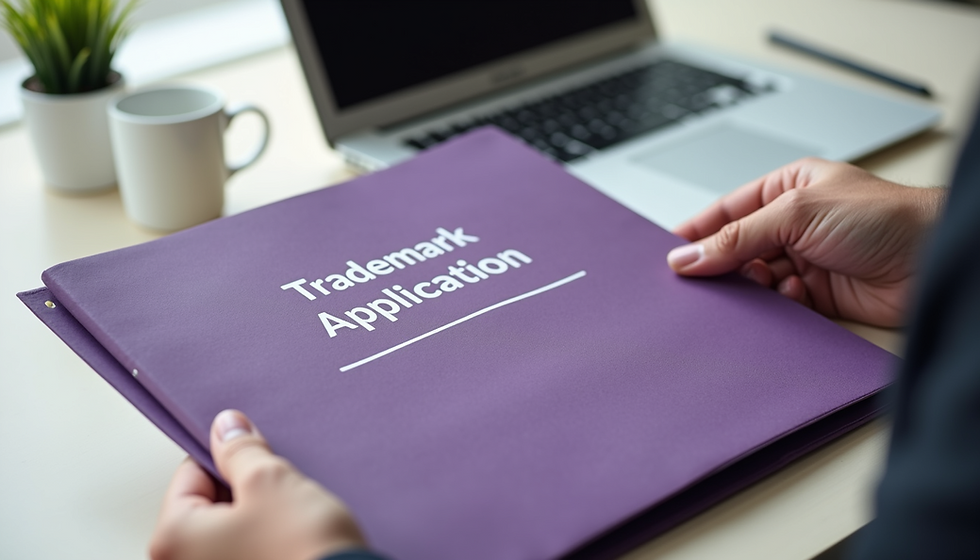How to Object to a Trademark Application Filed by a Non-affiliated Individual or Company in China
- GOMAXGROUP

- Oct 2
- 4 min read
In today’s rapidly evolving global marketplace, safeguarding your brand has never been more vital. Picture this: an individual or company in China files a trademark application for a brand you own, despite having no connection to you or your business. This situation can be frustrating and concerning, but there are clear steps you can take to object. In this post, we will guide you through the process of addressing this trademark infringement effectively.

Understanding Trademark Rights in China
Before you act, it's essential to grasp how trademark laws work in China. The country follows a "first-to-file" system, which means that whoever files a trademark application first holds the rights to that mark, regardless of prior use. For instance, if a local entrepreneur files for a trademark similar to yours, they could gain rights to it, harming your brand reputation.
The Trademark Law of the People's Republic of China governs these rights and outlines processes for filing, opposition, and cancellation. Familiarity with these laws will be your key to navigating the objection process more smoothly.
Steps to Object to a Trademark Application
1. Gather Evidence of Your Trademark Rights
Your first step in opposing a trademark application is to collect evidence that supports your use of the trademark. Consider compiling the following:
Trademark Registration Documents: If you have registered your trademark in your home country or other jurisdictions, include these records as they prove your rights.
Proof of Use: Sell records, advertising materials, or promotional campaigns showing how you have actively used the trademark. For example, if you can demonstrate that your brand generated over $100,000 in sales last year, it significantly strengthens your case.
Correspondence or Agreements: Any relevant agreements or communications that demonstrate your ownership of the trademark will aid your objection.
A robust body of evidence will bolster your case when challenging the application.
2. Conduct a Trademark Search
Before proceeding, it’s wise to conduct a trademark search to verify the details of the application in China. By accessing the China Trademark Office’s database, you can find crucial information such as the applicant's name, the trademark classification, and the filing date. Knowing these details will be essential when framing your objection.
3. File an Opposition with the China Intellectual Property Administration (CNIPA)
Once you have gathered your evidence and checked the application details, you are ready to file an opposition with the China Intellectual Property Administration (CNIPA). The opposition process gives you the opportunity to formally contest the trademark application based on your established rights.
To proceed, you will need to:
Appointed a CNIPA listed trademark agency in China if you're a foreign company or individual.
Complete the opposition form.
Submit your evidence backing your claim.
Pay the official opposition fee (Usually Rmb500, equal to US$75).
Remember, the opposition period generally lasts three months from the date the trademark application is published. Acting quickly is crucial to ensure your objection is taken into account.
4. Prepare for a Possible Hearing
Sometimes the CTMO schedules a hearing to settle the opposition. If your case goes to a hearing, you must clearly and concisely present your arguments and evidence. Preparation should include:
Summarizing your evidence and building a strong narrative around your case.
Being ready to counter any arguments the applicant may present.
Providing additional documentation if requested during the hearing.
Having a legal representative with expertise in Chinese trademark law can be invaluable during this time.
5. Await the Decision
After the hearing, the CNIPA typically takes several months to issue a decision. Patience is essential here. If they rule in your favor, the trademark application you opposed will be rejected. Conversely, if you lose, you might have the option to appeal the ruling, which could provide another opportunity to assert your rights.
Considering Alternative Dispute Resolution
If the opposition process does not lead to a favorable outcome, you may want to explore alternative dispute resolution (ADR) options such as mediation or arbitration. These methods can save time and money compared to lengthy court battles.
1. Mediation
Mediation involves engaging a neutral third party to help facilitate discussions between you and the applicant. This more collaborative approach can lead to mutually agreeable solutions while preserving business relationships.
2. Arbitration
Arbitration is a more structured process, where an unbiased arbitrator delivers a binding decision. This option can expedite resolution and is often less expensive than a full litigation process.
Strategies for Future Brand Protection
After addressing the trademark situation, it's important to be proactive about protecting your brand moving forward. Here are several strategies:
1. Register Your Trademark in China
If you have not yet registered your trademark in China, it is advisable to do so. This registration fortifies your legal protections and simplifies enforcement against potential infringements.
2. Monitor Trademark Filings
Regularly check trademark filings in China to stay aware of new applications that might pose conflicts with your brand. This proactive approach allows you to act swiftly if necessary.
3. Educate Yourself on Trademark Law
By understanding the intricacies of trademark law both in China and other areas where you do business, you can better shield your brand. Consider consulting legal experts in intellectual property law to gain valuable insights and align your strategies with best practices.
Your Path to Trademark Protection
Facing a trademark application filed by a non-affiliated individual or company in China can feel overwhelming, but it is a challenge you can overcome. By understanding trademark laws, gathering solid evidence, and following the correct steps to file an objection, you can protect your brand and assert your rights.
Stay proactive and informed with TMRegisterChina. By taking the necessary steps to safeguard your intellectual property, you can confidently build and grow your brand in the international marketplace. Contact our expert today if you need support for brand protection in China.



